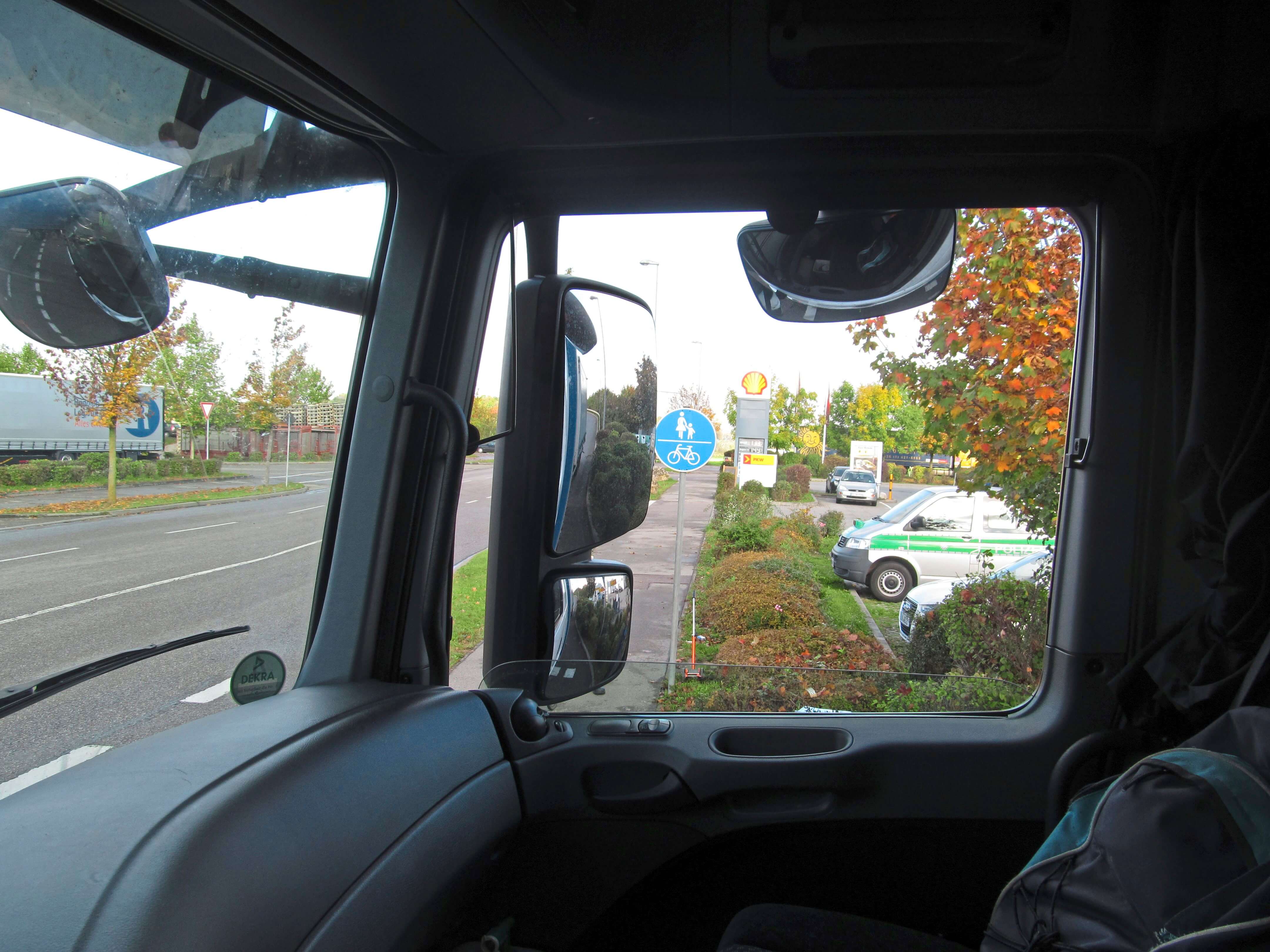Blind Spot – Greater Safety for Right-Turning Trucks
Especially in urban areas, right-turning trucks in right-hand traffic are a major hazard for pedestrians and cyclists, particularly if they stop at an intersection right next to the truck and so find themselves in the truck driver’s blind spot where they are partially or completely invisible to the driver. If the truck then turns right, there is a severe risk of being run over. No less hazardous are situations in which a vulnerable road user traveling straight ahead wants to pass a (moving) truck on the right, trusting that the truck driver has seen them and confident that they have priority. The grave consequences are clearly apparent when one looks at the statistics. Although the statistics in Germany, for example, do not contain exact figures for the “blind spot scenario”, experts at the German Federal Highway Research Institute (BASt) approximately determined in a study conducted some years ago the number of cyclists seriously injured or killed due to blind spots. According to their figures, which were projected across the whole of Germany, 2012 saw around 640 turning accidents resulting in personal injury in “blind spot situations” in urban areas, whereby 118 cyclists were seriously injured and 23 killed.
In addition to infrastructural measures such as moving the stop line forward and giving earlier green lights for cyclists, driver assistance systems such as truck turning and brake assist could help to significantly mitigate this potential cause of accidents. This assist system not only warns truck drivers of the presence of cyclists or pedestrians to the right of the truck if, despite taking every care while turning right, they fail to spot them, but also automatically brakes the truck to a standstill in the event of danger. Something else that should not be forgotten in this context are the mirror systems – in compliance with 2003/97/EC – that have been mandatory for years now and help to reduce the blind spot and improve the indirect field of vision. It makes no sense whatsoever to fit more, or more strongly curved, mirrors. Truck drivers have four mirrors to their right, all of which together make visible a large area in front of and next to the vehicle. However, drivers can only ever focus on one mirror at a time and consciously process the visual information they get from there. The order in which drivers look at the mirrors is based entirely on their own assessment of the situation. Nobody can tell the truck driver whether and when a pedestrian or cyclist will appear in one of the mirrors. Likewise, even more strongly curved mirrors are of no use because the current curvature already acts at the limit of what the human eye can resolve. Much more important under these circumstances is to ensure that the mirrors are positioned correctly. And that is exactly where the problem lies, according to a DEKRA study.
For this reason, DEKRA teamed up with truck manufacturers Daimler and MAN to create a mirror setting and adjustment guide. In addition to tips on using the truck mirror systems, which are compiled in a small brochure, a quick and innovative method for checking in practice the fields of visibility – as ensured with all of the prescribed individual mirrors – was developed that allows the mirror settings to be optimized. The relevant markings can be made quickly and easily in any vehicle fleet center or at rest stops. This method is yet another example of how DEKRA is looking to achieve the aim of the EU charter to reduce the number of people killed or seriously injured in road accidents. In Geneva, work is currently underway on revising Directive 2003/97/EC so that, in the future, cameras will be permitted as replacements for mirrors. This will also further increase the field of vision to be covered and so further reduce the extent of blind spots. At the same time, vehicle manufacturers are working on converting the images captured by the cameras into a single image on the monitor so that drivers only have to concentrate on one view. The use of cameras instead of mirrors not only achieves greater safety, but also has a positive environmental effect because of the reduced air resistance and, in turn, reduced fuel consumption and CO2 emissions.

